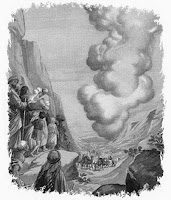For centuries, the dominant Western image of God has been
one of omnipotence—a being who is all-powerful and who controls the
destiny of heaven and earth and all who dwell there. But that’s not the only
image of God. And it’s an image that says more about our culture than it does
about God.
Franciscan friar and social activist Richard Rohr has said: “Your image of God creates you.”
Thus, if we imagine God as all-powerful and all-controlling, we become a people
who hunger for power and control. If, however, we imagine God as one who
suffers with us, we become a people
who act out of compassion and mercy. Similarly, if we imagine God as that which
calls us to do good, then we become a people who listen for that “still
small voice.”
As process theologian Catherine Keller has pointed out, there is no Biblical
term for omnipotence. In fact, the closest thing to an expression of God as
omnipotent in the Bible is “the Almighty,” a rather inadequate translation of the
Hebrew term El Shaddai, which literally
means “the one with breasts.” It is a term that suggests a nurturing deity, one
that is the source of life. But it does not suggest omnipotence.
There are many images of God in the Bible: God the creator,
God the destroyer, God the pillar of cloud and
If it is true that our image of God creates us, then it
is up to us to choose. In some ways, no image of God at all (essentially an
atheistic understanding of ultimacy) is the truest image as it acknowledges our
ultimate unknowing and leaves it up to us to do something with this perceived
void.
However, whatever image of God we choose (even no image
at all) has a profound effect on who we are and how we act.
If we are to be agents of transformation in the world,
our image of the ultimate must be open-ended, forever becoming something other
than what it is or has been, something that is more of an invitation than it is
a declaration. Something more like the pillar of cloud and fire than the
embittered dispenser of merciless judgment.
For far too long, we have cowered behind images of God as
omnipotence, images that have been contrived and controlled by those in power—the empire-builders,
the colonizers, the conquerors—in order to retain and exert and expand their
dominance over others.
Religious transformation requires us to shed the oppressive
garment of omnipotence and instead put on what the apostle Paul called “an
armor of light”—a newfound layer of awareness and illumination that enables us
to see things both as what they are and as what they might become.


